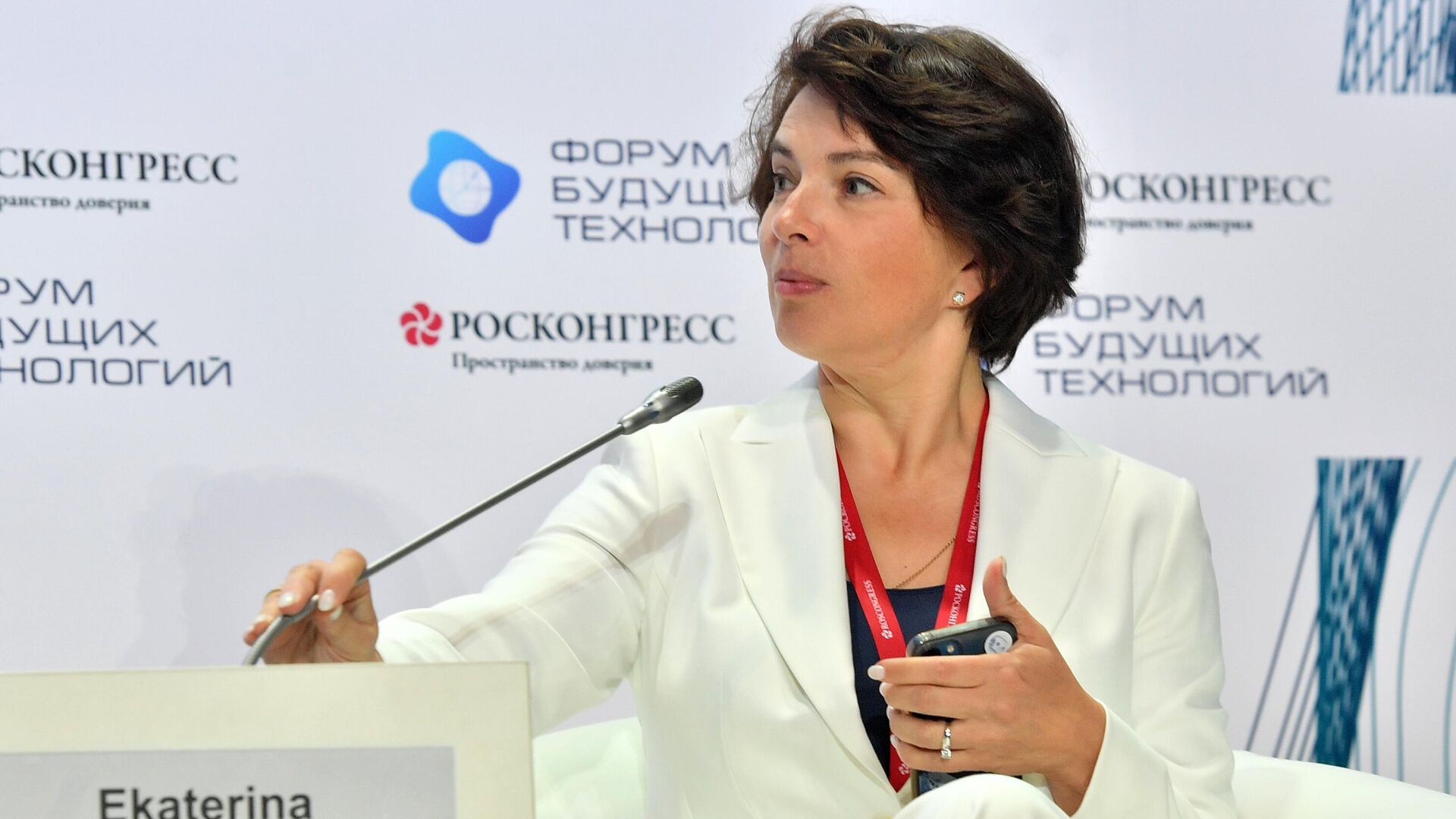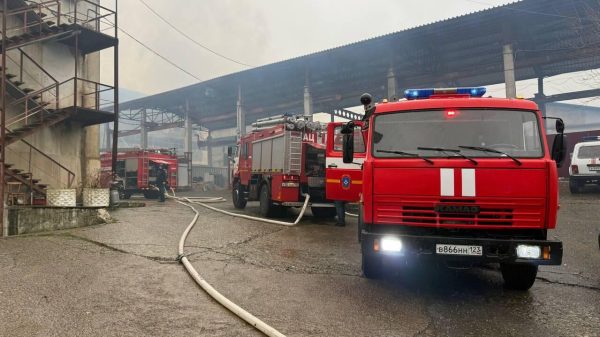
The state corporation Rosatom today faces extremely ambitious tasks — to ensure the country's technological sovereignty in the most important industries and at the same time become a world leader in the field of digital technologies. Director for Digitalization of the State Corporation Ekaterina Solntseva spoke in an interview about the ways and conditions for achieving these goals, current activities and digital capabilities of Rosatom.
– Ekaterina Borisovna, at the opening of the industry conference on digitalization of Rosatom in St. Petersburg, you spoke about the state corporation’s intention to “enter a new technological orbit.” Can you specify this capacious image? What is the coordinate system in which Rosatom is designing its digital “tomorrow.”
– We are truly designing a digital technological future – we believe that it is time for us to determine the tomorrow in the field of “digital” and the rules of the global technological game.
In a short period of time, our country will have to create or bring to a new level its own critical technologies in order to ensure technological sovereignty. And here it is necessary to work proactively. Intensively engage in the creation of our own unique solutions that would be competitive on a global scale. Therefore, the main characteristic of the new orbit in the digital sphere that Rosatom seeks to enter is defined very clearly: “technological leadership.” Moreover, leadership in this case is not a slogan. This is the goal.
In fact, the fifth anniversary conference “Digital Rosatom” was dedicated to concretizing our strategy. Over the course of two days, with the participation of government representatives, heads of state corporations, and leading experts, we worked to shape the image of Rosatom as a digital leader in the long term. An image that would be achievable, and not “copied” from others or from “leadership textbooks”. I would like to emphasize that, when designing the digital future, Rosatom relies on a very important foundation — the need to unconditionally fulfill all obligations undertaken to the state in terms of digitalization. This is the fundamental difference between Rosatom’s digital strategy and traditional “commercial” digital transformation programs.
– But the conditions for achieving technological leadership in the digital field today are far from comfortable…
– And that is why we need a powerful technological breakthrough. Generally speaking, I have little faith in achievements that are prepared in hothouse conditions. Many of our country’s technological breakthroughs are the result of overcoming the highest tension of intellectual and spiritual forces in the face of tough external challenges. In difficult historical periods, we know how to pull ourselves together and demonstrate our best qualities. Now we have entered exactly this stage.
A “non-digital” technological future simply does not exist. Digital technologies are not only transforming all areas of human activity, but are also becoming a strategic resource. “Digital” increasingly determines the long-term competitiveness of not only individual companies, but also entire countries. And only those states and corporations that can work as efficiently as possible with this new resource can count on leading positions in the world.
The conclusion is obvious. Focus on mastering the “keys” to priority digital technologies is a historical imperative. It is necessary to develop advanced Russian competitive technologies, which at the next stage will become new industrial standards. I’m talking here about leadership in quantum computing, in industrial artificial intelligence, in digital twin technologies and mathematical modeling of physical processes, in the field of life cycle management of high-tech industrial products and in a number of other end-to-end technologies important for industry and the economy.
< br />It is required not just to “replace” Western software products and hardware solutions. It is necessary to create an integral technological system that will not depend on external forces for its critical components. As a result, a “window of opportunity” arises. By effectively solving the current problems of “digital import substitution”, we are gaining the necessary momentum to try to enter the leadership orbit.
This is the first axis in the coordinate system that defines the target image of Rosatom as a digital leader.
– What then is the second “axis” of digital leadership?
— I would call the second “axis” “Technology and people, digital and business.” Today our country is entering a period of building a new economic model that meets the spirit of the “digital” time. As you know, in July of this year at the “Forum of Future Technologies. Quantum World”, co-organized by Rosatom, the President proposed the formation of a new national project for the period until 2030 — to create a data economy.
Today, all the leading states of the world are busy searching for their own “digital identity.” This is a completely new challenge for the global community. There are no ready-made answers here. But more and more open questions appear. Russia today is one of the first to formulate a program of major digital restructuring, building on the results already achieved. The task of the new national program “Data Economy” is to transfer the entire economy, social sphere, and the work of government bodies to qualitatively new operating principles, and to introduce management based on big data. This will make it possible to achieve complex, multiplicative effects: improving the quality of management and labor productivity, the creation of jobs with advanced competencies and high wages, increased availability of services and, in general, fundamentally different opportunities for people.
Rosatom is actively involved in the work of the government in the design of a new national project. And that's what's important. We see that it is not only technology that is changing. People who want to make the most of new opportunities are changing!
Just a few years ago, issues of large-scale use of artificial intelligence in Russian industry were discussed, rather, at a “theoretical” level.
Let me give you an example. This year I was lucky enough to visit Yakutia, to visit one of the leading enterprises of the Rosatom Mining Division. The management directly said: “We need artificial intelligence. We are developing digital field technologies, and we have our own experience.” As a result, a person responsible for the production part came to our industry digital conference to discuss the development of artificial intelligence. Let me emphasize: not an “IT specialist,” not a “digitalizer,” but a production worker. This is our internal functional customer.
Today in the nuclear industry, readiness for the practical use of artificial intelligence is already a reality. Rosatom enterprises use all AI subtechnologies: computer vision and natural language processing, speech recognition and synthesis, decision support systems, as well as promising AI methods and technologies.
The use of AI makes it possible to predict the condition of equipment, predict and prevent unwanted incidents in production. In particular, the Chepetsk Mechanical Plant actively uses an artificial intelligence system created in our industry, which helps manage product quality. Moreover, this solution is ready for replication in other industries.
– That is, people in industry are ready for “digital”?
– Yes, people in the industry are ready for advanced digital technology. And in many other industries in Russia we see similar processes. But now it is critically important to begin to separate the “fashion for digital technologies” from the effectiveness of their use. And here we move on to the third axis of the discussed “orbit” of digital Rosatom. This is the desire to lead in the effectiveness of the use of digital technologies. As a group of global industrial corporations, we want to be the best in mastering both the mandatory and voluntary digital curriculum.
Here I would like to remind you of one important story for the IT industry, which took place in 2003 and, I think, is almost unknown to young professionals. Then a popular IT journalist published a very provocative article in a reputable international magazine under the title IT Doesn't Matter. No, the author did not question the effectiveness of information technology. He said that, if desired, any participant in the global market can use IT as effectively as everyone else. This means that IT as a source of competitiveness… “does not play a role.” And in essence they are no different from electricity or, say, a telephone.
20 years have passed since then. And it became clear that the differences from telephone and electricity are huge, and IT can (and should!) be a competitive advantage. It is not enough to simply “implement” digital technologies; it is important to learn how to use them, providing a real economic effect. Not everyone can do this.
That's why we want to show you how to get the most out of digital technology. How to achieve effects — direct and indirect. How to make “digital” humane and useful.
You know, Russia has already given the world a huge amount of technology on which other countries have made good money. And, by the way, Russian students win international programming championships with enviable consistency. But so far, our country’s share on the global map of digital technologies is far from the positions we strive for.
Rosatom is not moving towards “laboratory” leadership in end-to-end digital industrial technologies. We want to set new international industrial benchmarks. The best examples of the effectiveness of using digital technology in industry. And in terms of this indicator, at least become on par with leading foreign players. And if possible, bypass them.
– Is it possible to briefly formulate a portrait of digital Rosatom in 2030? What will change? What will the corporation become?
— This portrait is precisely formed by the digital vision of Rosatom until 2030 that we developed, which became the basis for discussing our plans with the digital asset of the industry.
Rosatom is currently implementing a Unified Digital Strategy. We were the first to develop this document among the largest state-owned companies back in 2018. And since then, we update it every year taking into account new challenges, but keep the strategic goals unchanged.
As I have already said, the key principle of our digital vision is one hundred percent fulfillment of the tasks assigned to Rosatom by the state. The basic “platform” is the dual role of Rosatom as a builder of the technological sovereignty of the Russian Federation and a leader in developing priority digital technologies. And, in close connection, everything that we talked about. That is, technology and business. People. Services and efficiency.
On the global stage, we plan to become a supplier of advanced digital technologies to at least 30 countries. We intend to achieve 100% digital maturity of all products of “big” Rosatom. And, as I said, harmoniously solve the dilemma “people or technology”…
– How?
– In short, by replacing the logical operator “or” with “and” to arrive at the statement “people and technology.” In practice, this will mean that, for example, the share of routine operations in the workplace thanks to digital technologies will drop to zero and 100% of Rosatom employees will be covered by digital technology. This is a very difficult ambition to realize — if you remember that the corporation unites 400 enterprises employing over 330 thousand people.
— What is the expected business effect?
– We consider it possible to increase the corporation’s digital revenue tenfold by 2030. But the consolidated business effect from the implementation of a digital strategy is largely determined by the optimization of internal processes. The impact of this figure on the EBITDA of the entire state corporation will be 5%. According to the current strategy, the state corporation has a goal of increasing revenue to 4 trillion rubles by 2030. Given this scale, our ambition to contribute “digital” to the corporation’s overall business is another challenge.
— What else is unique about Rosatom’s long-term digital strategy?
— I would like to touch on another important aspect — the fourth dimension of our coordinate system. All of humanity needs to think about the need to form a clear moral framework for the development and use of IT. About the ethics of «digits».
In 2021, Rosatom, like many other large Russian companies, joined the Artificial Intelligence Code of Ethics. The degree of influence of digital technology in general, and artificial intelligence in particular, on people’s lives will only increase over time. And we all need to learn to work with this in order to minimize possible negative consequences and at the same time maximize the positive potential of information technology.
The nuclear industry knows firsthand what it means to master strong technologies so that they can bring not destruction, but light and warmth. At one time, thanks to the decisive contribution of our country, the world was able to develop rules in the nuclear field. The time is coming to pay just as much attention to the issues of digital development. Including artificial intelligence. And not only at the national, but also at the intercountry level.
Yes, the current international situation is not conducive to the formation of such global agreements today. But thinking and talking about it is necessary. That is what we are doing.
I believe that the world will come to the point of creating an international body that — like the IAEA in the nuclear field — will formulate and maintain reasonable and humane rules around the world for the use of artificial intelligence, quantum computing and other «strong» digital technologies. In the interests of the inhabitants of our planet.























































Свежие комментарии